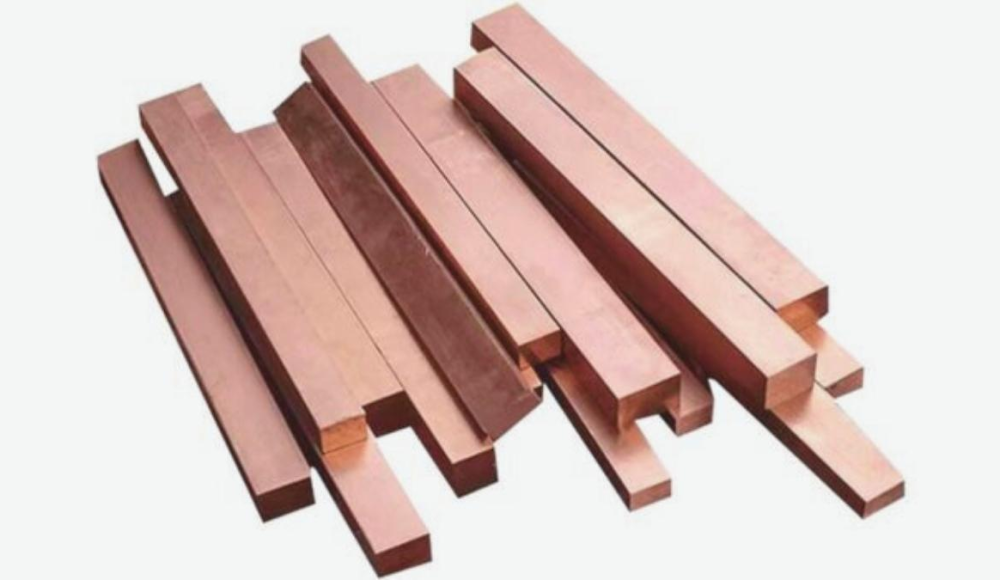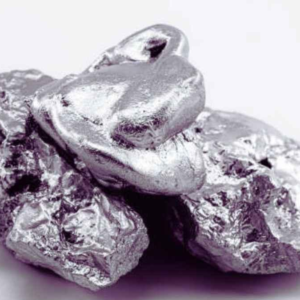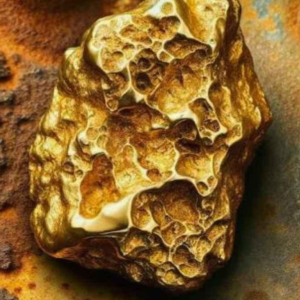銅がその融点とどのように相互作用するかを理解するのは難しいと思いますか?? 構想が無ければ, ピーリングなどの作業が困難になる可能性があります, 合金化, そして品質保証. 銅は重要な金属です, 冶金学者は、開発する加工と製品の品質を向上させるために正確な融点を必要とします。. この広範なブログ投稿を読んで、冶金学の知識を高める素晴らしいスタートを切ってください。!
銅の融点とは何ですか?
銅 通常、融点は次のとおりです。 1085 Cまたは 1984 F. 銅の融解温度が高いため、電気配線などの用途に適しています。, 配管, および産業機械. その融点の知識は、加工を希望する冶金学者やエンジニアにとって重要な役割を果たします。, キャスト, 優れた導電性と強度を維持するために銅を合金化します。.
融点 & 純銅のその他の特性
純銅の特性をまとめた表は次のとおりです。:
| 財産 | 価値 |
| 融点 | 1,984 °F (1,085 ℃) |
| 密度 | 8.96 g/cm3 |
| 熱伝導率 | 401 W/m・K |
| 電気伝導性 | 58.0 ×10⁶S/分 |
| 色 | 赤茶色 |
| 一般的な用途 | 電気配線, 配管, 調理器具, および産業機械 |
銅合金の融点
銅合金, 一般的に, 材料に含まれる成分によって融点が異なります。. 強度と腐食特性を高めるために銅に他の元素を加えて製造されます。. 例えば, 真鍮 亜鉛を含むと、銅と比較して融点が低くなります. このような柔軟性により、建設や自動車などの分野での特定の用途の開発が可能になります。.
ここでは、いくつかの一般的な銅合金とそれぞれの融点を示します。:
| 銅合金 | 合金組成 | 融点 |
| 真鍮 | 銅と亜鉛 | 1,650-1,720 °F (900-940 ℃) |
| ブロンズ | 銅と錫 | 1,740 °F (950 ℃) |
| 白銅 | 銅とニッケル | 2,150 °F (1,177 ℃) |
| アルミニウム青銅 | 銅とアルミニウム | 1,740-1,830 °F (950-1,000 ℃) |
| ベリリウム銅 | 銅とベリリウム | 1,800 °F (982 ℃) |
大気圧 vs. 銅の溶解温度
はんだ付けポイントや銅棒などのはんだ合金は、大気圧などの環境の影響により変化する可能性があります。. ほとんどの場合、, 圧力をかけると金属の融点が上昇します, 中でも銅は例外ではありません. 銅の融点は 1 気圧は 1085 純銅の場合は摂氏. このポイントは、山頂などの高地では減少します。. しかし, 圧力が上がると銅を溶かすのに必要な熱が上がります.
銅に異物が含まれると、通常、銅の温度が低下します。 金属の融点. 独特の, これらの不純物は、特定の物質の沸点上昇を引き起こす可能性もあります。. もちろん, 酸素などの不純物の存在により、銅の液相の融点が下がります。. 合金元素は、材料の有用な特性の一部を改善すると同時に融点を下げることができる不純物となる可能性があります。.
銅の融点に影響を与える要因
銅の純度は、分光法のような測定技術によっても検証できます。, X線, ICP, EDX, および導電性試験.
気孔率レベル
多孔性のレベルと粒子サイズにより、銅の溶解温度がどの程度高くなるかが決まります. 異なる合金を使用すると、結晶粒構造に応じて沸騰および溶解の傾向が変化します. 例えば, 真鍮と銅は溶解度が異なります, こうした構造変化のせいで.
ホール・ペッチ関係
ホールペッチの関係は、粒子サイズが金属の強度にどのような影響を与えるかを決定します. 彼らはまた、金属の粒子構造が小さくなると、より強くて硬い金属が生成されることも発見しました。, ただし溶解温度は低い. 水銀と銅を鉛と比較する場合, 鉛は粒径が小さいため、融点が低くなっていることがわかります。.
粒径の影響
ニッケル銅合金の融点は銅の融点よりも高い, 1,455 ニッケルの粒径が大きいため、°C. 溶融温度は粒界によっても決まります。, 2 つの粒子が集まる領域. 粒径が小さくなると、材料の境界も弱くなり、溶融温度が低くなります。. 一方で, 粒子構造が大きくなると溶融温度が上昇する. 例えば, 錫メッキ銅の融点は約 1,900 結晶粒構造の変化による °F.
転位密度
融点は転位密度によっても決まります. 通常, 転位密度が小さい結晶は融点が高いという特徴があります。. これは、銅線の溶解挙動に見られるように、非常に小さな銅粒子が大きな粒子よりも急速に加熱されることを意味します。. 一部の製造プロセスでは粒子サイズが変化します, より細かい粒子の材料はより速い速度で溶けます.
表面エネルギーと応力
表面エネルギーの変化は銅の融点にも影響します. 熱エネルギーが表面エネルギーを上回ると銅が溶ける可能性があります. 銅にかかる高い応力は原子配列を収縮させ、その結果銅の融点を低下させます。. 応力により塑性変形が加速され、溶融温度が変化します。.
製造後の要素
硬化や再結晶などの他の製造後の要因も融点の値に影響を与える可能性があります。. これらのプロセスにより、銅の配向性と密度が向上します。, 耐熱性も向上します.
銅を溶かす方法: 概要
ここでは、銅を溶解する方法とその動作原理の簡単な説明を示します。:
- 炉溶解: 制御された炉の温度で発生する熱を利用して銅を溶かし、「ハート」の形に成形します。.
- 誘導溶解: 電磁誘導を利用して銅素地に熱を発生させて溶かすものです。.
- プロパンまたは天然ガストーチ: トーチからの直火熱を使用して、小さな部品や銅片を加熱して溶解します。.
- 電気抵抗加熱: 銅に電流を流し、抵抗によって電気熱を発生させて金属を溶かします。.
- 反射炉: 炉の屋根からの熱を金属に直接当てます。, より大きなチャンバーでの溶解を容易にするため.
- 真空溶解: 真空プロセスにより電気分解が軽減され、汚染が回避されます。.
他の金属と銅の融点の比較
銅と他のさまざまな金属の融点の比較は次のとおりです。:
| 金属 | 融点 (℃) | 融点 (°F) |
| 銅 | 1,085 | 1,984 |
| アルミニウム | 660 | 1,220 |
| 鉄 | 1,538 | 2,800 |
| 金 | 1,064 | 1,947 |
| 銀 | 961 | 1,763 |
| 亜鉛 | 419 | 787 |
| 鉛 | 327 | 621 |
| ニッケル | 1,455 | 2,651 |
| チタン | 1,668 | 3,034 |
| 真鍮 | 900 – 940 | 1,652 – 1,724 |
| 白金 | 1,768 | 3,214 |
| 錫 | 232 | 450 |
| タングステン | 3,422 | 6,192 |
| モリブデン | 2,623 | 4,753 |
| ビスマス | 271 | 520 |
| コバルト | 1,495 | 2,723 |
| 水銀 | -39 | -38.2 |
| クロム | 1,907 | 3,465 |
| バナジウム | 1,910 | 3,470 |
| ロジウム | 1,964 | 3,567 |
銅を溶かす方法? 関係する手順
銅を溶かすための基本的なプロセス手順は次のとおりです。:
1. 材料を集める
銅線やスクラップを集める, または古い銅線を溶かす, または銅スクラップ, 炉またはるつぼの中で. 安全用品を使う (手袋, ゴーグル, エプロン), 溶けながら.
2. 炉のセットアップ
使用する溶解炉の種類は誘導加熱炉でも可, プロパン, または銅の量に応じて電気的.
3. 銅を準備する
銅の表面を研磨して不純物を除去します。. 溶けやすいように, より簡単に銅を小さなスライスに切ることができます.
4. 炉を加熱する
炉のスイッチを入れ、希望の温度を調整します. 銅の場合、最高温度は約 1,085°C または 1,984°F である必要があります。.
5. 銅を積み込む
炉が熱いとき, 銅をるつぼまたはるつぼにゆっくりと入れます.
6. 溶解プロセスを監視する
銅を監視し、温度に注意してください. さらに遠く, 過熱しないように注意してください. 必要に応じて、温度計を使用して、しばらくしてから温度を確認してください.
7. ドロスの除去
銅が溶けるとき, 表面にアクが発生する. 不純物やドロスを除去するために、これを定期的にすくい取る必要があります。.
8. 溶けた銅を注ぎます
銅がすべて液体になったら、それを型または鋳物に注ぎます。. 化学物質の流出や飛沫による事故を防ぐため、環境への予防措置も講じる必要があります。.
9. 銅を冷やす
注がれた銅が冷めて型の中で固まってから持ち上げてください。.
10. 最終製品の検査
凝固した銅の規格とその過程で輝く素材の品質を検査します。.
まとめ
このガイドでは銅の特性の概要を説明します。, さまざまな分野での使用に不可欠なもの. 熱伝導率と電気伝導率が高いため、, 電気配線に使用されます, 配管, および製造業. 銅に関する知識は、エンジニアや冶金学者が溶解方法を改善し、材料特性を改善して銅ベースのシステムの性能を向上させるのに役立ちます。.
これらの洞察を活用する, 産業界は、現在の社会において重要な材料となる銅の効率性と信頼性を高めるためにアプリケーションを強化することができます。. 精度の高いトップ 同社は冶金分野で有益な情報と経験を提供することに熱心なパートナーです。. 今すぐお問い合わせください, そして知り合う, 銅加工プロジェクトをどのようにお手伝いできますか!




1 「」について考えました銅の融点 – 冶金学者のための完全な研究”